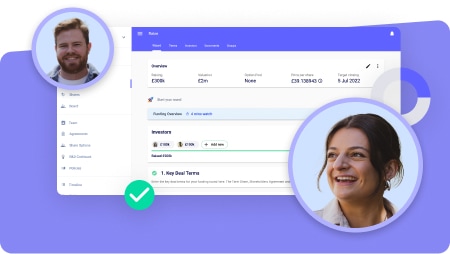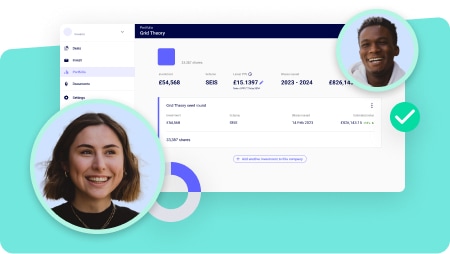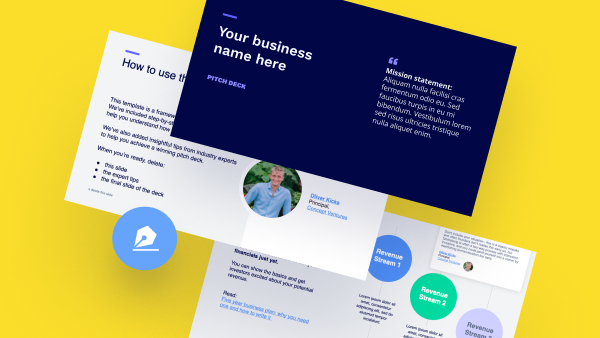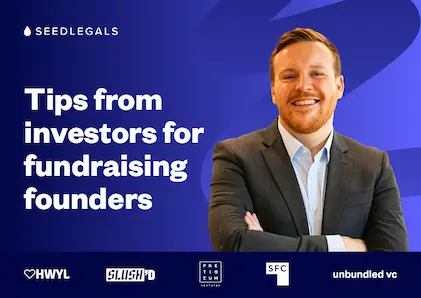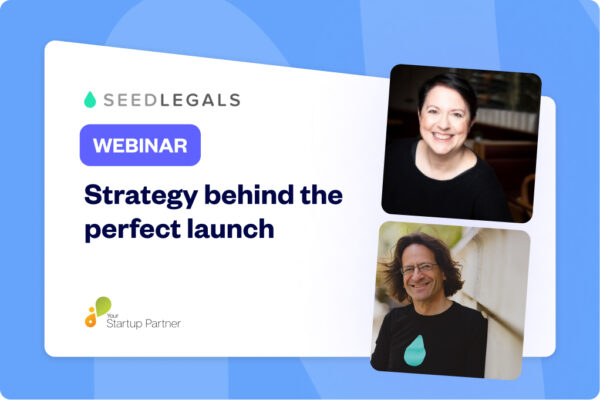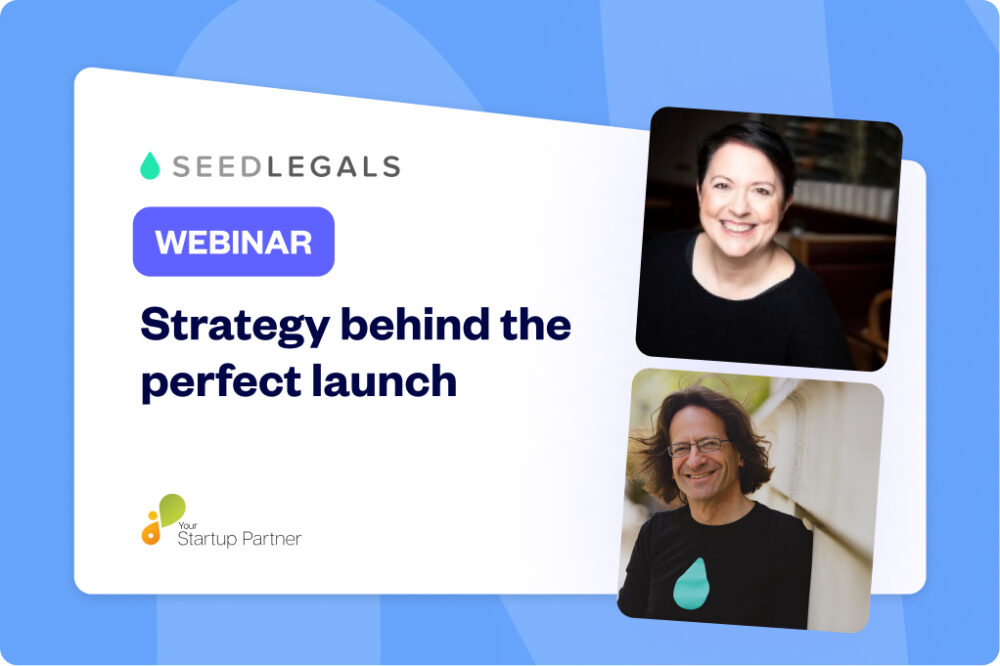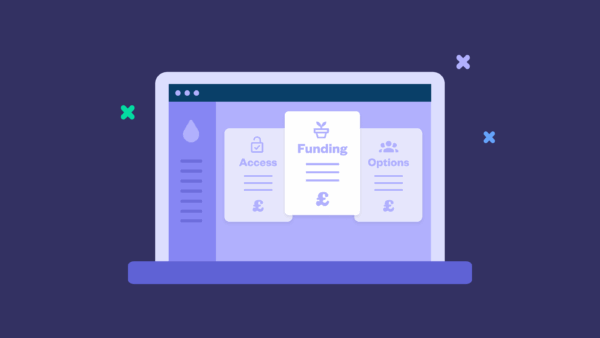Read transcript
Anthony Rose: Hello, everyone! I’m Anthony, I’m the founder at SeedLegals, and let me hand over to our special partner and guest today. Lee, over to you.
Lee Lam: Hi there, everyone! And thanks very much, Anthony, for letting me come on and join the conversation. It’s fantastic. So, hi everyone, I’m Lee Lam. I’m the founder of Your Startup Partner, and I work as a startup strategist. I work with very early ideation all the way through to exit and acquisition. I’m always looking at the structure of your business, and this topic is very relevant for me because I’m usually there right at the point where people are pressing that go launch button, and I always think it’s an interesting dynamic of when that moment is.
So, when I was speaking with Anthony a little while ago, we had mutual feelings about some of the topics to cover. So, we thought this is a conversation that needs to be spread with more people, and here we are.
Anthony Rose: All right. Well, thank you. Our topic today is the right product, the right market, and the right message.
Now, I think most people know me as kind of the SeedLegals guy, as in the legals guy, but actually, product is near and dear to my heart. Really, I’m a product guy. I’m not actually a lawyer. Don’t tell anyone. We employ lots of lawyers, but my passion for product goes back many years. When I was actually with Kazar and on a good day there were 2 million instals, and I became obsessed with watching user numbers and the tiniest little button change you’d make would drive big changes in traffic and behaviour.
And then I headed up BBC iPlayer. And I was obsessed with product things, mostly about the video working and not breaking the internet and not buffering and so on, and then that morphed into other startups. And now SeedLegals. So at SeedLegals I see lots and lots of founders who are often struggling with the same, you know, not just the legal side of things but the product side. So today we can explore the things related to getting started with your first product launch.
Now, one of the things that most of us are, we’re of course super delighted and obsessed with making a wonderful, perfect product, but the perfect product, you don’t know what it is until you’ve launched it. So you could spend huge amounts of time creating a product only to learn afterwards that no one really wanted that, or that you’ve built twice the amount of stuff that anyone really wanted and half the set of things that they really wanted you haven’t built at all.. So in this discussion, we’re gonna talk about how to learn what your users probably really want before you go and build it. Let me start with an example from SeedLegals itself.
So, at SeedLegals we do document automation. No one wakes up in the morning and goes I’m looking for document automation, but they’re looking to solve a particular problem. Creating a shareholders’ agreement with all the questions and all the automation is very complicated. And when we started, there were hundreds of questions. How did I know? How did we know which things our customers looking to do a funding round would really want? Would they want this at all? Maybe their lawyers wouldn’t let them use the legals. And we’d build all this for nothing. So how could we get started by doing less work, less technical development but still give our customers a product? And being legals, we couldn’t go,
“Haha! You’ve got a beta quality shareholders’ agreement. The legals will probably mostly work. There might be some bugs.” Obviously, that wasn’t going to work. So what we could do is we could do things manually in the background. We could create the nice web form that has our users enter the deal terms, but then in the background our legal team would use Microsoft Word and create the document. When they were saying, “So you get a great document checked by a human,” that was going to be great, but we had to do it manually. And when our team was screaming, “Oh my God, Anthony, this is killing us. We need to automate it,” then we would know which deal terms people wanted and that people really wanted to use it. So with that as the intro, let me hand over to Lee for the particular focus of the session. Lee, tell us a little bit about an early stage founder coming to you. What are the key problems? And what’s the guidance that you’re going to give?
Lee Lam: Yeah, sure. So I think it was hearing the history behind SeedLegals that really spurred this conversation. Because I think when I talk to founders, quite a few of them start with the solution rather than the problem. So they know what they want to create, but they haven’t done the research to find out if there is a market for it. And so the first key is always, what problem are you trying to solve? Otherwise, you come up with a product that solves something but not really sure what and certainly not sure that people really need it. And so I think that the SeedLegals genesis story is really important here because you saw the need, you saw the solution, but you recognised that. Did you really understand the problem that the customers would identify with as well? And I think that is one of the biggest restrictions. When people are looking to launch, they are really unclear, and what they’re unclear about is, you know, if I put this out on the market, are people going to buy it? Well, by the point of doing that you should be in a position to be able to test that theory. And that’s where this kind of MVP status really comes into its own. You know, we can talk about whether MVP stands for minimum viable product or valuable product. I tend to lean towards valuable. What you’re trying to do is find out if you’ve got something that sells, and once you’ve got something that sells, then you can talk about refining it and making it work exactly the way that you want it to. But as a business, your first point of focus has to be on whether you have something that is commercially valuable and that people will spend money on. And I’m guessing that’s part of where SeedLegals came in. How long did you go through that process with SeedLegals, and at what stage did you feel, “Yeah, this is now something I feel I’ve got a better understanding of the market?”
Anthony Rose: Okay. Alright. So, I mean, let’s dive into the MVP part. Because I think this is, you know, everyone has done the reading, they know about sort of MVP. But the challenge you have is you wake up in the morning and people aren’t coming to your product. And does this mean that you’re one feature away from it just taking off? If only we added these three user requests it would take off. Or maybe you’re just hunting in the wrong part of the woods completely and there just isn’t a need for it or you’re not communicating it. So, you know, the minimum viable. I always think about it as continually shipping rubbish in a sense, which is an excuse for a half-baked product. Minimum valuable is, you know, the users might want all of these features but if you could give just a slice it’s not going to satisfy 100% of people, it might only satisfy 30%. But if that 30% is the right audience and now you have to find that audience or they find you can use a simplified version of your product. That is the essence of, you know, getting something out sooner, so small but perfectly formed. So it’s said that if you’re not embarrassed by your first release, you’ve left it too late. You could have released earlier. That’s a hard thing to do at the time. It’s also said by many founders that they will get a bad reputation or people will learn to not want to use their product. And I say to them, you know, there are 60 million people in the country. In the first period, maybe a hundred people will find your product. If they didn’t like it and you launched too early, guess what? That’s 59.999 million that have never seen it. So you’re much better off learning. And, you know, the other thing is, you know, you’re not going to signpost it to look like it’s a Series A funded company. People are going to know in an instant that it’s early stage. You know, your website’s going to be super early stage, you’re going to say just launched when you talk to your customers. You’re going to explain, “Hey, you’re one of our first users.” And actually, most people want to be helpful and will be delighted to give feedback and will actually be quite accommodating. You have to be a bit careful. If you want people to pay for the service then people will be a lot less accommodating. But if it’s free, I’ve tried many AI products recently where the output is quite variable. But that’s okay. You know, it doesn’t integrate properly with Google or whatever it is. I’m okay. I’m delighted to give feedback. I’ll stay tuned so you can engage with your customers to get something out quickly and get some more feedback. Now let’s talk a bit more on that timing, Lee. You’ve got some thoughts on the perfect time to do that.
Lee Lam: Yeah. So I would always go when you think that you have a perfect product like you say you’ve left it too late. So you’re trying to find this perfect. It’s not necessarily the perfect product at that point. It’s what is the market doing at that time? It’s better to launch to a market that is primed and ready for you and that you can learn from than if you’re going to try to upend the market wait for me because we’ve just got a few more things that we want to do. And I think that’s where people can get unstuck because in their head they want to go with that perfect product, but that is going to take too long. Looking at the product as well, you may find that there’s a natural rhythm to when you should launch. So if you’re running an e-commerce site and the majority of your work is going to happen around seasons such as Christmas, you need to launch with enough time not just before you definitely want to be well advanced by the autumn even. But you want to know when is the best time? When is my customer base going to be most ready for me and work before that? You know, we do have this concept of the 7 touch points in marketing, right? Where there is a generally held belief, and I’ve seen it happen this way, that you need around 7 or 8 times of people hearing about you before they even really engage with what you are. So there’s no point having that big launch event because that’s one event. That’s the first one. You’ve got another 7 to go before anyone really pays attention and that takes time. So you have to factor that in. So you have enough touch points before your market is in the right timeframe to really make the most of it. Anything finance-related, maybe that is around the tax laws or the tax schedules of your particular area. When do you need to be? When are you going to be the most useful and work backwards? Because you have to factor in people have to get to know about you first. You could be the perfect product. But if you launch right at the last minute, they can’t use you. And so understanding how your market is going to be using your product alongside how long it’s going to take to develop to get to that point where you’ve got something of value. To your point around those early users, you know, they are essentially your testers and they’ll tell you a huge amount of information that you can use. So you can get as well as you can at the right time. It’s such a valuable resource. And you know the days of building in stealth mode are long gone. People can see that you’re building so make them part of the journey. And that also affects the timing, right? If you join, if you bring people on with you, they also create the momentum. And you can have essentially the perfect launch because you’ve primed your audience.
Anthony Rose: So that’s a great point. Thank you. Now, I think what often happens is people those seven touchpoints that you mentioned, or seven times people hear about you, I would have put it to slightly fewer than that. That is super important. I think a common mistake people make is they think, “I’m going to launch, and then suddenly the traffic’s going to go like this.” But actually, it doesn’t happen. And the challenge with that mode of thinking is you wait for perfection, thinking that you can open the doors, and they’ll all come. But actually, people do have to hear about your product or offering several times, some of it directly from you, some of it from others. You know, if you tell people how wonderful you are, no one’s going to believe you. When a customer or someone else that you think is giving a trusted view reports on it, that’s good. When three people start talking about it, now it’s in your mind. And of course, the other thing is many, many things people don’t need right at the moment. If I launch, and where it’s great. We do funding rounds. you know. They’re not everyone in the world going actually, this morning. I’m planning a funding round. No, they’re going to go. Oh, now, there’s a better way of doing funding rounds. When I next want to do that in six months’ time I need to know where to go. So actually, what you’re going to have is your traffic is going to be this gentle building. And now you want this curve to start earlier rather than later. If you’ve launched your product when this curve starts. You’ve just spent all this time and wasted all this time essentially building something, and only then are you getting the messaging out. So you want to bring the message, the outbound message to start as soon as possible, because if you are burning money week on week, how can you start leveraging that sooner so you can do that. With content marketing, you can do it with maybe some freemium piece, maybe something simple that people can try. Maybe there’s, you know, if you’re trying to work out company valuations, for example, a simple calculator while you build the more complicated one. So you want to start as soon as possible.
Now, on the seasonality, there’s the positive and there’s also the negative. So yes, obviously if you’re doing Christmas drop shipping or something, you know, everything has to come together. Not just that the product is there but you have to have everyone signed up and orders and so on. So you’re gonna go back months from there. But there’s the converse that I see, particularly in France, where there’s always a reason to delay doing something. It is August! Everyone’s on holiday. Oh wait no, it’s Christmas. It’s holidays. Wait wait! It’s Easter. It’s holidays. So for me, you should never procrastinate because your company’s burning money all the time, your competitors are building something. So always try. I mean, there’s to be a really good reason to not get something out today and waiting for perfection just means that this curve just starts later and your traffic takes longer to build. So all right. So let’s switch gears from to actually starting development. So insourcing and outsourcing. So you know you would. Of course, I think most people would love to have a nice development team whether they work in an office. You know these days or whether they were hybrid or whether they’re remote. is now a moot point. But of course unless you’ve raised a few hundred thousand pounds. You can’t afford to hire a bunch of developers so perhaps you would outsource. So let’s dive into outsourcing.
And then let’s talk about no-code low-code as well. So, Lee, over to you on thoughts on when it makes sense to insource, develop with your own team, and build a team first, outsource, and then I’ll give my thoughts on that.
Lee Lam: Yeah, sure. So I think one of the key things that particularly sort of non-techie founders don’t always appreciate is that when you engage with technical staff, a lot of what you need to tell them is instructional. You need to be able to explain to them the whole flow of what you’re trying to create. Now, it’s not as easy to build something and then go, “Oh hold on a second. Can you add something from the very beginning?” You know, a techie will just look at you and want to throttle you, right, because they’re building an architecture not just to create the beta. But actually this is scalable. Make sure that it doesn’t just hold 10 users. It holds 1000 or 10000 and to do that. You have to give them an idea of what the full process looks like. So the very first thing you have to do is know your process, like from the very beginning to the very end. What is it that you’re asking the technology to do and why? Then you can go out and have a look at the technical solutions when you do that. One of the simplest ways to try before you buy is using third party products, like if you’re going to have a messaging system. Maybe use Slack as an interim measure. Use Asana if you’re looking for a workflow. There’s so many things now that integrate together you could actually reflect the process that you want to have. Not even developing anything yourself. But the reason you do it is to test the flow. Is it working the way that you want to? And you’re slowly building those instructions so that by the time you’re talking to your dev. they’re much clearer. They know what you’re trying to deal with and you are more confident that you’ve given the right instructions. The outsourced coding now is phenomenal. They can do a really good job, but only if you give them really good ways of thinking about it initially and in a lot of cases. What we can see is you to give them a 50% finished process. and a dev will look at it and go. I can build that. But I’d much prefer to build this because it’s easier, or it’s quicker, or it’s cheaper, or it’s, you know, it’s what I think the business should look like. and then so, but surely the founder loses sight of where is their building? So the absolute key is to know what is it you want them to create so that you can make good choices about who to bring on. I’ve worked with founders who have got halfway through Demos of their MVPs and realised that their technical person literally doesn’t understand anything about the business process, the vision, they just following orders. And you know, it’s really difficult to get them out of the way of bringing someone more knowledgeable, and it can often slow things down, and from the founder’s perspective it knocks their confidence. They now feel like, well, maybe I don’t know what this is. If you’re talking to a non-techie founder and a dev says that won’t work. You have to be in a good position to say, is it that you can never work? Or is it that you can’t get to work because we are? We’re in the space of innovation. Right? We’re founding. We’re entrepreneurs. We will create things that don’t exist right now. And for a lot of dev companies. You have to find the relationship that you can test that innovation and build something more than exists right now. Otherwise, you end up looking like everyone else. And maybe that’s not what you envisaged coming out with. Just because the first coder that you speak to says that can’t be done. The more you understand what you’re trying to do, you just go. No, you’re just the wrong person for me. Yeah, I need to go and find someone else, and you can really negotiate on a much stronger basis.
Anthony Rose: Okay, so a lot of great points there. So let me dive into a few as I remember them. So the first one is, which actually I think is super important, are you a technical founder or not? So many times founders are technical. They’re coders. They start coding something. The challenge there is they may not know how to market it, and they may not know how to price it, and they may not know how to create a great team but they can execute it. But there are also a lot of founders, you know, Doctor Dialysis machine something. They’ve got the vision to cure poverty, whatever it might be, and I’m not sure poverty is curable for those 2 things. But anyway, so there’s a fantastic vision. But how do you execute it? And what I’ve seen are sometimes the visionary founders or founders who are not technical have a big problem with translating their technic, their vision into something deliverable.
So I imagine this island which is a democracy built on a DAO and go and build it. And the developers are looking at you. It’s like dude. What are you talking about? What do I build? So if you’re not a technical founder you’re definitely at a disadvantage in turning that vision into reality.
So how are you going to bridge that? Well, firstly if you can find a technical co-founder so that they share the vision but they can put it in a way that a tech team can build it.
What does a tech team need to build it? Well they need a set of stories and epics and tickets, Jira tickets and so on or Trello tickets that say there’s a button that says Follow and it goes here and it’s green. So somewhere between the vision and the here’s what to do in the next hour of coding somebody needs to translate that. So finding that technical person who’s going to live and breathe your customer experience is really important. So then that goes to in-source or outsource. And I think that personally I’m a fan of the team that lives and breathes the product together.
Whether they’re physically in the office or working from home is now hybrid of course but I’m less of a fan of outsourcing. Because I think that if you know exactly what you want okay great write a product spec and have someone build it. But if you don’t know what you want. Then imagine that you’re making a dating app and you’ve created a dating app and it’s got some swipe things and some buttons and you give it to some people and it’s just not performing very well. What is the spec to make it perform better? You have no idea what you are going to do then you’re going to sit with some users. You’re going to get your developers to sit with users and you’re going to watch them. Use it and you’re going to realise quickly the swiping is too slow or people are clicking in the wrong place. So if your team is interacting with your own end users.
You’re in a much better place to rapidly iterate to get a great product. But imagine you’ve outsourced it or you’re writing to whoever it is going, “please make the button higher and please make the action faster.” Every request you send them, they’re going to see it as a negative, you changing the specs. It’s a chargeable item, as opposed to your tech team going. “Oh wow! The thing we’ve built isn’t quite working. We need to go and iterate rapidly.” So that’s the insourcing and the outsourcing.
The next thing is for me, fake it till you make it. So can you get something to market with the least amount of technical effort? And here I think one of the interesting things is when you start your business, you know, who is your first technical person? So if you go out and hire a CTO, the problem with the CTO is often they think they’re not going to code anymore. Those days are behind them. They’re going to build a team. But you don’t have money to pay for a team so early on. If you hire a CTO, they might be wanting to manage people rather than they’re a manager rather than do. And what you really want is a tech lead.
So your first tech hire is going to be the person that’s going to code things themselves and of course you can work with them to help them understand that they will grow into CTO or they can even put CTO on their business card that they really want to be somebody that’s building something. But here’s an observation that I found which is, if you find somebody that’s just out of uni, they are scrappy. They can do it in Ruby, do this, put it together in Air Table, but they will make mistakes and the mistakes they make will be number one. They might under-engineer it. It might be held together with gaffer tape. so that as soon as too many users arrive it all falls apart which might be perfect. If you’ve planned that the first one is a throwaway or it might turn out to be a disaster because you thought this was your production version and you’re constantly putting out fires. But they may also do the opposite which is over-engineer it great. We’ve got redundant databases in Ireland and New York. We’ve got active failover with domain things we’ve got you know. DDoS attack prevention. It’s like dude. I’ve got three users on a good day. We didn’t need to do all of this.
So you know an experienced person, usually a CTO, has been around and done this, would know instinctively the level of engineering that’s needed to get your early version and the last thing to wrap up before we move to the next subject is and and this is a really important one. As a founder, that you have in mind your first version. Are you building it to throw it away and make a proper version afterwards? Or is this first version meant to morph into your next one? And if you get it wrong you’ll be forever trying to patch something. So let me explain. Let’s say that you’re doing this dating app right. So v1 might just be a Figma mock-up. You’ve got nothing built. You’ve made some nice graphics and you’re explaining the concept to people and it’s going to connect you with people who’ve done you know in a space near you something or whatever like all the dating apps do. And so now you can test the concept. You can test the name. You can have people pretend to click on the buttons and you’ll get a set of feedback. But of course there’s no live data to it.
So what can you do beyond that? Well you can pick some no-code low-code framework and you can try and create something there. But now as you do that you should be thinking when I make the real version of it and I’ve got tens of thousands of users. Will I be expanding on this? Will I just use this to test the concept and then I’ll make a new version built in Java or some heavy-duty framework that will take me much longer but might be much more resilient. so that knowing upfront whether you plan to sunset the early version or keep going is important because you may for example start hiring Ruby developers or Python developers which is great for getting something fast that you may not be able to find enough of those type of developers or scale it or make it work at volume and that may not be the best long term choice. Anyway things to think about.
So let’s talk quickly about no-code low-code platforms. The first thing to note is your public website should never be built by your tech team. You should always use a CRM. Whether it be Squarespace, Webflow, WordPress. I always joke that everyone hates WordPress and everyone ultimately ends up on WordPress. And I think you start off by doing something like Squarespace, Bubble, whatever. You get a site up and running in 10 minutes. Homepage. But you may soon hit some limitations and then you might switch to Webflow where you know with some customization maybe you have to hire somebody. It’s a little bit more effort. and then eventually you run into the limitations there and then you end up on WordPress which is a pain in the butt that you can do anything with. But make sure that as a founder you want to change your website messaging you want to pivot. If you can just log in and change your message, change the background, come up with new testimonials whatever it is without needing your developers. That is important. And when I see companies whose public website has been built by their engineering team and on a call we discuss changing the headline message and they go. I’ll need to put a ticket in for them. To do this dude you should be able to log in to do this now so definitely make your public website you know based on a CRM. Now any thoughts, Lee, on no-code low-code solutions.
Lee Lam: Yeah, I think again it’s based on the fact that the tech is going to be built on your business vision and understanding that that business vision will change. To your point, you have to be able to reflect it. You know, in the first 12 months your company is going to look very different from what you thought it was to what it ends up as and the more you can rely on the tools that are intuitive that allow you that immediate access and you tailor along the communication with your customer base to say that this is developing, it’s evolving and bring them on the journey. You can get to a point where at the end of that year you’ve got something that is more stable, that is ready to go into the crash that is WordPress most times, because it is the best and the most powerful engine, but it’s garbage in, garbage out. You are going to be changing constantly while you figure out your markets and that sweet spot of getting it right for your customers. And you need access to that as quick as possible. There’s so many tools out there now. Whether it’s APIs that can plug into places or the whole platform itself. You can explain your business process and the value you want to offer the market with so few touchpoints from a tech perspective and that helps you stay in control of that messaging until that point where you’re ready to go right now I want to have far more control over the tech and I need to start building myself. But it gives a founder a lot more opportunity to explore different avenues without you know. I can’t tell you how many founders have said to me. Oh I would make that change but my web designer has got my admin password. So I can’t. And all of a sudden they’re spending another amount of money for another website because they don’t have access to that one. It happens so often. Use the products that allow you to test out your theory, test out your process first and don’t fall into the trap of somebody else holding the keys to your particular castle.
Anthony Rose: That’s a great point. And actually, I’m surprised at how many times I’ve seen founders who’ve had a dispute with their developers and the developers have the keys. So do not let anyone develop more than like 2 days worth of development without you having the keys for everything. And actually if you think that there may be a dispute if it’s outsourced or something, make sure you download all the code yourself. I mean if you’re in GitHub and you’ve got the keys, it’s one thing having the keys but if the person’s now locked you out or changed or deleted the code so like every week download all the code. So you never want to have a single point of failure particularly if it’s someone outsourced to a contractor. With your own team, you generally trust your team. My Bulgarian wife has a very nice saying, “The highest form of trust is checking,” says Comrade Lenin. And that means that at SeedLegals there’s no one person who’s ever a single point of failure. It’s always going to be two people who’ve got the admin keys for everything. So in case someone gets hit by a bus or something nothing comes to an end and the same thing should happen with you. Now going back to the storytelling and the messaging and going back to fake it till you make it one of the things that I think that you should be doing as a founder is to make your website look like you’re much further ahead than you are. So let me explain. Say if I go to a website and it says we’re working on something, talk to us to find out more. Then I know you haven’t built it yet. But if I go to a website and it’s got a button saying log in with Google book a demo then I know. I mean particularly if it says log in get started now. Then I know that you’ve built it and the thing is all your customers realise this as well. So in the stage that you’re building something, how can you make your site look like it’s much more ready than it really is. So obviously you’re not going to mislead users. If they log in there’s nothing to be had. But you might in terms of validation if no one is going to click the button to book a call no one is going to click the button to log in. There’s no point building all of this. You want to see if people are going to click the button. So here’s an idea which is when you go to booking.com. They could have said We have revolutionary technology that matches you with leading hotels in different parts of the world with an insanely clever booking system secure. They don’t do any of that. They just have a text field that says where do you want to go? And I want a hotel or a flight? So on your website instead of explaining all the things that you do try to phrase it as the customer has arrived at your site. There’s a problem to solve. They push a button to solve it. And then since you haven’t built it. Can you just have an air table database running in the background and you connect a type form or some simple form a sender that uses Zapier to send it to your email where you use your air table to look up something. And then you reply by email to the user. So you can validate things and even provide a decent service way before you’re ready to fully automate it. And this I think even. And by the way you know you can do this before you’ve built it. But even after you’ve built it too often I talk to SeedLegals’ customers looking at their website. and they’ve raised hundreds of thousands of pounds. They’ve built stuff. But the website is still looking very much like you know we put the site together before we built anything and we have to update it. So see how you can make your site feel that you’re a running service and put yourself in the point of view of a customer that is looking around.
I want to. Oh you do exactly that book a demo sign up now I’m in and that’s your best validation. All right. So talk. Let’s talk quickly about legal considerations. So of course being the SeedLegals guy I would say make sure that anyone whoever does any work for you always has a contract. The contract should always have IP assigned to the business. you know. Obviously when you are series a backed this is all standard. You know that your challenges where a couple of people meet at the pub and you get started on something and it’s kind of a hobby and you’re not going to infuriate the other person with some legal documents. But the problem is the longer you leave it the more difficult it becomes. And you know the thing about your developer saying they only the keys to your Github Repository and not giving it to you. And you’re screwed. This is because you didn’t clarify when they were going to get paid and who owned the IP. And now they’re saying they own the IP and they want to rave share or something. So you know the legal documents are there to essentially be that awkward conversation about who owns what and who gets paid what and sometimes in cash and sometimes in equity. But if you the longer you hold off doing the awkward conversation the harder it’s going to be later on. Okay so Lee before I go to our summary of things any things that you want to hop in with.
Lee Lam: I think what can be useful to understand is I just want to reiterate really the need to bring people with you on the journey. Like when I talk to founders, the perception of what they’re creating, that kind of shop window of the website, I think sometimes gets over-engineered because they feel a need to present themselves in a perfect way, like with a full package.
And it really doesn’t take very much for someone to do a little bit of digging to find out where you are in the process. And so even when you’re developing, building public is a term and a phrase that we use. And I think sometimes people assume that there’s some kind of vulnerability in building in public, that you’re saying you’re not ready. And actually no, what you’re doing is you’re empowering your customer base to tell you what it is they want. You know one of the reasons things like crowdfunding work so well is because there’s a whole bunch of people who already know that you exist before you’ve built the thing and they’ve already paid some money to you because they believe in what you’re creating. And so we know that the customer base nowadays doesn’t want the big reveal, they don’t want the title, here it is. They want to feel part of the process and feel like they’re the champions. You know, we talk about the early adopters, the ones who not only are the first ones to find us but the ones that will amplify our message. They can’t find us if you’re waiting behind a bit of code or a button that doesn’t quite work the way that you want. You need to be out there talking to people. So I just want to reiterate that because there’s this trifecta of reasons founders give me for not wanting to press Go, and that’s the product’s not ready, it’s the wrong time or I don’t really know who I’m selling to. Find out who you’re selling to first> and the other two will naturally fall out of those conversations. I think all of the tools that we’ve talked about, the no-code, ha! Using devs, using your own team, will help you create something that’s special. But always allow your customers to come on the journey with you because they are going to help get your message out far quicker than any amount of promotion that you could do yourself can ever do.
Anthony Rose: All right. So I think actually you know that you’ve just nailed the key reason for this discussion are those three reasons that founders give you for procrastinating. So go through those again and then we’ll dive in for a moment on them. Because if you’re a founder watching this going yes that’s exactly why I’m not launching. Well let’s see how we can help you launch sooner. And then I’m going to talk about storytelling for a moment.
Lee Lam: Yeah, no worries. So there is essentially three things that I get told and I see it with the clients that I work with. The first is, the product’s not ready. Normally, that’s because they’re looking for perfect, and they don’t know what perfect looks like, because the second one is, they don’t know who they’re really selling to. So without that feedback loop already established, you’re trying to create in a vacuum of not enough information about what it is that the market is after you. Creating a business is. It’s not a hobby. It is. I’ve recognized that there is a problem with the marketplace that I know how to resolve. So you ask the market as early as possible. but then they get themselves tied up because they say, Well, I can’t go out to people without knowing what I’m selling. It’s like, Yeah, you can, because you’re not selling a product at first. You’re saying, Hey, I’ve noticed that this isn’t happening properly. I think there’s a better way of doing this. Do you agree? And and you get people to go? Yeah, I see that as a problem, and then you can start building in your head the product, you know. Richard Branson has always said, you know. Say yes, and then figure it out later. And if you look a lot of the way that his businesses have been built along the way, it’s do we see a problem. Yes. Do we think there’s a solution? Yes, right? Let’s build it. So those two things are constantly used as I can’t do one without the other. But I can’t start the second one, because I haven’t done the first one, and so ignore that. Talk to your customers first, because they give you the information. They will also help you figure out the timing. One thing that a lot of founders will do is they’ll come up with their idea and they’ll go.
I need social media. I need social media quickly, right? And it is a huge part of the founder’s journey. Of getting that visibility of getting in front of investors, and I totally understand it. But there is a huge risk with social media. You could go viral. The number of people who want viral until it happens is huge. And you have to bear that in mind when you go out there. Timing is probably out of your hands at that point, because if you happen to hit a rich vein of, you know, an argument or a problem that people really latch on to. They. They want it now they they’re like, yes. Have you got this now? And some of the clients I’ve worked with have had that viral moment. And they’re like thrust into this moment of project development on the hoof, because they’ve literally got people going. Where do I sign? How do I get involved? And all of these things can paralyse a founder and think I can’t launch. I can’t do anything. but if you have an answer for each of them. If you know that one’s going to feed the other, then you can,maximise, you can maximise those moments, and you can makethe most of that visibility while encouraging that storytelling that, you know, we’re on a journey together, guys, because it’s not quite ready. But we’re going to build it, so that when you press that button you get what you want from it. And so, rather than using them as this, this perfect triangle of blockers. actually they facilitate one another. And from our previous conversations we were both having this conversation going. Yes, exactly. Just get out there and figure it out as you go along, because that’s the fun part of entrepreneurship. You know the building and seeing it come to life.
Anthony Rose: Alright great points and I think the worries that of course all these people will come to your website and have a bad time. The reality is that two people will come to your website and you could have done more to provide something to them.
So just before we wrap up and turn to questions about the art of storytelling. And so here’s what I usually find. I’m talking to a founder and they passionately telling me you know here’s a particular use case. You know there are ten million people in the UK. Where Banks won’t give them the bank account the unbanked you know. It’s because they don’t have the right credit history or they stole students and it’s a disaster. They can’t get a loan, whatever it might be. And you already bought into the proposition. And then you go to their website. And the website says AI and Blockchain ledger technology solutions for the unbanked. And you go. There’s a complete mismatch between the student looking for something and this generic bland messaging. So one of the key problems I see is the difference between the founders expressing beautifully and passionately the problem they’re solving. And the website which just says stuff. So your website should explain the problem that people have. And on the in the case of SeedLegals. you know when we started it said we do document automation and contract generation. And then I realised zero people in the world wake up in the morning and going. I’m looking for contract automation. No, they want to do a funding round. So we skipped all of that and replaced it with happy smiling faces and rocket ship testimonials. You know the fastest way to do X and the best way to do Y and don’t bother saying what you do just explain the problem you solve. And it’s a bit like booking. com just where you want to go today. So thank you. Everyone. I hope this was valuable. Don’t go away quite yet. We’re going to. Now jump and read some of the questions and if you have any questions please pop them in the chat and let me see right now where we are. Alright! Let me give me a moment. All right. What are your views on using? No code platform says Jamie like Flutter to build an MVP. To keep costs down. And then when you have traction make a proper coded version do you want to take that one first, Lee.
Lee Lam: Yeah sure. I mean if if a lot will depend on the resources. We are in a world at the moment where many investors want to see what you have before they invest and in many cases they want you to start generating revenue. So you do have to do things on a budget. So they can be helpful. What I would say is that you have to have a timing in place. Have a roadmap. Whether that’s I’ll hold on to this for 12 months or when I hit a particular level of revenue because it will be built on a fairly generic platform you know. That’s the whole point. It’s the skeleton. It’s not gonna have all of the engine tools that you’re going to want going forward. So having mine some trigger points of. If I have this many customers or I have this much revenue coming through or a particular set time that you test your theory your test your approach during that time but knowing that you’re gonna come away from that and learn what does well what you want it to do differently and definitely try to keep it to a a limiting amount of time. Just so that you can move forward with more purpose. And as I say but when you’re looking for investors investors want to see it in action so anything that gets you to that space quickest is worth doing for sure.
Anthony Rose: Right, great point. So I think, you know, to go back to the early discussion, which is if you think about I’m doing this as a throwaway, first, this is the building blocks for my structure and I’ll build upon it later. Alright. So the next question is actually, I think, at the heart of everything, which is the problem we’re facing is that even though the genesis of the product lies in customers telling us what would be fantastic to have.
Now that we have it they seem not so keen about it. And this is actually a real problem, which is you listen to customers, you build it, and then it turns out it doesn’t really work. And I look at this with Twitter. Now X. Every single thing they have done has zero uptake other than increasing the number of characters in a tweet because the thing is I think people perceive a product is used for a particular thing and you bolt on all this extra stuff and no one cares. So you know, Twitter, the discovery and the buy things you see on television. And this, nobody cares. You just sort of tweet and see someone else’s tweets. And so the problem is, and this is the non-trivial problem. If you listen to what customers are telling you, will that be a good thing or will it be a bad thing? And obviously it’s nuanced. My previous startups were more social networks and one of the things I realised is if you listen to every request from your customer you would just build another Facebook. But nobody wants another Facebook. So you mustn’t do that.
And so it’s really difficult.And so I started off being a tech guy for many years being tremendously frustrated that the to-do list was much longer than your actual ability to ship things. And then I switched modes completely and I think it’s actually liberating to have a huge number of things that you’re not doing so that you can focus on the smaller number that you are doing. And so you’re going to pick the most valuable things that align with your story and the mission of your product. And then you’re going to really have to think about all those requests. Are they super necessary or not? And when I look at our GitHub tickets I’ve got tickets that I wrote on SeedLegals like in 2018 and they’re still not done. And on the one hand, I’m really annoyed that they’re not done. On the other hand, the fact that the product still works and they’re not done meant actually they weren’t really that important. They never rose to be the most important things. So to try and work out of the things that people are asking.
Which of these are your core customers which things are just nice to have and which things actually maybe you intentionally didn’t want to build because you wanted to force it to be a platform, not a service, or whatever it might be. It didn’t fit your methodology. But this is really a difficult one because if you listen to each user request you’ll be building more and more things and you’ll be optimising for a sort of local maxima that maybe misses a much bigger opportunity elsewhere while you’re doing all these little things. Hard to know. All right. So next question is how do you see an MVP. If the product will make a big difference in a market has lots of competing products that can be disrupted as an MVP. It can’t stand out which is a really great point. Let me take that one first and then I’ll hand over to you Lee. So there are actually two parts in that question. Number one, if you have competitors should you be doing this at all? You’ve picked a really hard problem space. I mean that’s SeedLegals. I keep thinking. Should I get into HR Payroll? But why? There’s HiBob, there’s Crunch. There’s all of the others. I mean I could provide a much wider service. You can do everything in one platform but you know these other propositions exist. So you are you know, obviously built a better version of Jira or one of the other messaging things there’d be no Slack. So it’s definitely something you can do.
But you may be better off picking a slightly different problem space. But if you are still doing that then I think I like to call it the shtick. Your product needs a shtick, something that people remember that sticks out. So if you remember Snapchat now Snap when it launched their website was yellow with a ghost on it and everyone older than like 15 went. I have no idea what you’re talking about and everyone younger than 15 went. This is so awesome I’m in. So what is the if you’re a dating thing it’s swiping.
If you’re something else I don’t know. So try and figure out the single thing that is going to be pressure that is going to jump out and get your attention and people will talk about it. So one of the things I sometimes use for recordings is a software called Mmhmm. The most ridiculous name I mean you can’t tell people go to but it actually got a huge amount of press when it launched because of its silly name. I’m not suggesting. That’s a good strategy but the shtick is the thing to go for to whether you’re you know in a contested competing space or in a unique space. Getting press eyeballs is super difficult and so find the shtick. Lee any thoughts.
Lee Lam: I guess what springs to mind is okay. So you’re in a competitive space. The reason you’re joining must be because you spot a gap right? There would be literally no reason to be there unless you can spot that. The current offering doesn’t go far enough. Now you have to lean into that gap, because, if you’ve noticed it, you have to assume that there’s a customer base that have also noticed it. If you think of something like Airbnb. They took a really long time to actually make a presence, because they started off, saying, You know, we allow you to rent out places and people went. I need that. But when they say, Are you fed up that hotels in the on in the locations where you want to stay. They’re like, yes, absolutely. Yeah. And then your messaging gets through. So kind of combining your two points, Antony, it’s that the stick is. Look for the rub point, you know you’ve noticed a gap. Think of it like, why would this irritate the current customer base? Because people will move through pain far quicker than if you give them something better. Right. If you deal with an irritant that they have with the current offering, they are far more likely to go. Yeah, this is the solution. Then, if you try to fight a corner against brands that are much more established, much better brand visibility. You know we see this in promotion all the time. You don’t necessarily need to dig out other competitors. But just spot the gap that’s there and say, isn’t it a pain that this is here? Wouldn’t you prefer something to be able to deal with this? And people naturally find you? Because if you’ve spotted it, they have as well.
Anthony Rose: All right. Great point. So now we’ve got another great question, which is, what if your product has to be certified as fit for markets. So then you can’t have an Mvp. Which is a great point, you know. If you’re making a dating app, you know some MVPs are bad. If you’re making a medical device or skin cream or something like that, maybe it needs certification. And is there a way to skip the queue? So firstly, you can see this in two ways. Number one is, if you can’t skip the queue, and there’s no such thing as an MVP. Then, in a sense that gives you a natural note, you know, if it takes five years to get FDA or whatever it is approval, there can be a lot fewer companies looking to do that. And so you’re going to be one of a smaller number. But you’re going to have to find what’s called often patient capital investors to give you potentially millions to wait many years to get there. And although it has an upside of the most, it is also incredibly slow and much harder to get funding for. But there is often an MVP. And the MVP means a version of the product that doesn’t need that certification. So, for example, I was talking to a legal customer looking to do some medical formulation, but if the concentration is below a certain point, then it can be sold as a cream and doesn’t need to be certified. So there may be variants of your product that you can get to market for more limited use cases or smaller, the concentrations, or whatever it is. That isn’t your dream goal, but gets you there fast, or maybe it can be sold to, you know, qualifying doctors or others. So you skip the certification in this limited case, or it’s sandboxed or something. So you know, if you can’t afford the long and expensive road, then, which things can you do to rethink it? To get there faster? Sometimes you can offer a time in materials business where you are consulting while you’re building the app that has a challenge which is, investors go great. You’ve got a great consulting business, but it’s not a platform. and you may never get out of that vortex. All right. So I think that’s a wrap for us, Lee. Where can people find you if they want to find out more.
Lee Lam: Yeah, absolutely. Well, I am constantly on LinkedIn. So and somehow I have managed to get Leland, which I’m not entirely sure how, probably cause I’ve been on there for nearly twenty years. So please feel free to connect with me on there. My website is yourstartuppartner. com. That talks about both early startups. And when I start working with growth companies and my platform is advisoryinyourpocket.com. So that’s for very early startups to get, you know, good quality advice at a very early stage. And yeah, find me. You will find me in all of those three places.
Anthony Rose: All right, thank you. And you can find me on Linkedin: Anthony Rose. You can reach me on email: [email protected] for the questions we didn’t get to please drop a Linkedin message or an email to either Lee or me. We’d be delighted to answer and this recording will be available for those who missed it, and we’ll turn it into a content page. And so thank you everyone for joining some nice messages. I hope it was valuable. And I am personally here to help with not only the legal but the product side as well doesn’t scale on one-to-one. Hence, you know, sessions like this have a great day. Everyone think about storytelling. Look forward to seeing your product. Thank you.
Lee Lam: Thanks. Everyone.
In today’s competitive market, launching the right product with the right strategy is more important than ever. Whether you’re an early-stage startup or an established company, understanding your market, refining your product and nailing your messaging can make all the difference.
Watch as Anthony Rose, CEO and Co-Founder of SeedLegals, and Lee Lam, startup strategist and founder of Your Startup Partner, discuss:
- Identifying genuine market needs
- Developing a Minimum Viable Product (MVP)
- Engaging with early users for feedback
- Crafting effective messaging for your audience
Key takeaways
Understanding the market and problem
- Identify the real problem: make sure your product solves a genuine market need.
- MVP: develop a Minimum Viable Product (MVP) that delivers real value.
- Launch timing: launch when the market is ready, not when the product is perfect.
Development approaches
- In-house vs. outsourcing: choose between building an in-house team or outsourcing based on your resources.
- No-code/low-code: use development platforms for quick testing and iteration.
Customer engagement
- Early feedback: speak to early users for valuable feedback and product iteration.
- Build in public: share your development journey to build trust and gain insights.
Marketing and messaging
- Effective storytelling: clearly communicate the problem you solve, not just your product features.
- Multiple touchpoints: make sure potential customers hear about your product several times.
Legal considerations
- Contracts and IP: always have contracts to protect your intellectual property and clarify ownership.

